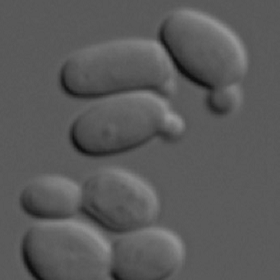RNA Degradation
 |
Understanding the mechanism of selective RNA degradation in yeast The most promising of the RNA dependent therapies involve endoribonucleolytic cleavages by members of the dsRNA-specific ribonuclease III (RNase III) protein family. These enzymes are required for RNA interference (RNAi), the processing of ribosomal RNA (rRNAs) and small nuclear RNAs (snRNAs). In general, eukaryotic RNase III triggers the formation of dsRNA that in-turn represses gene expression by degrading or inhibiting the translation of cytoplasmic messenger RNA (mRNA). Recently, we have shown that the budding yeast RNase III, called Rnt1p, can directly regulate gene expression by triggering nuclear RNA degradation. This unexpected finding suggests that nuclear mRNAs are subjected not only to quality control surveillance but also represent robust targets of gene regulation. However, the factors that govern these newly identified nuclear regulatory events and their contribution to the overall program of gene expression remain unclear. The pressing issue now is to elucidate how cellular signals trigger selective mRNA degradation in the nucleus. Our strategy is to define signaling mechanisms that link nuclear mRNA stability to specific metabolic states and use this information to build a general model for eukaryotic gene expression.
References: Lavoie M, Ge D, Abou Elela S. Regulation of conditional gene expression by coupled transcription repression and RNA degradation. Nucleic Acids Res. 2012 Jan;40(2):871-83. Lavoie M, Abou Elela S. Yeast ribonuclease III uses a network of multiple hydrogen bonds for RNA binding and cleavage. Biochemistry. 2008 Aug 19;47(33):8514-26. Ghazal G, Gagnon J, Jacques PE, Landry JR, Robert F, Elela SA. Yeast RNase III triggers polyadenylation-independent transcription termination. Mol Cell. 2009 Oct 9;36(1):99-109.
|











 1
1 2
2 3
3 4
4 5
5 6
6 7
7 8
8 9
9 10
10